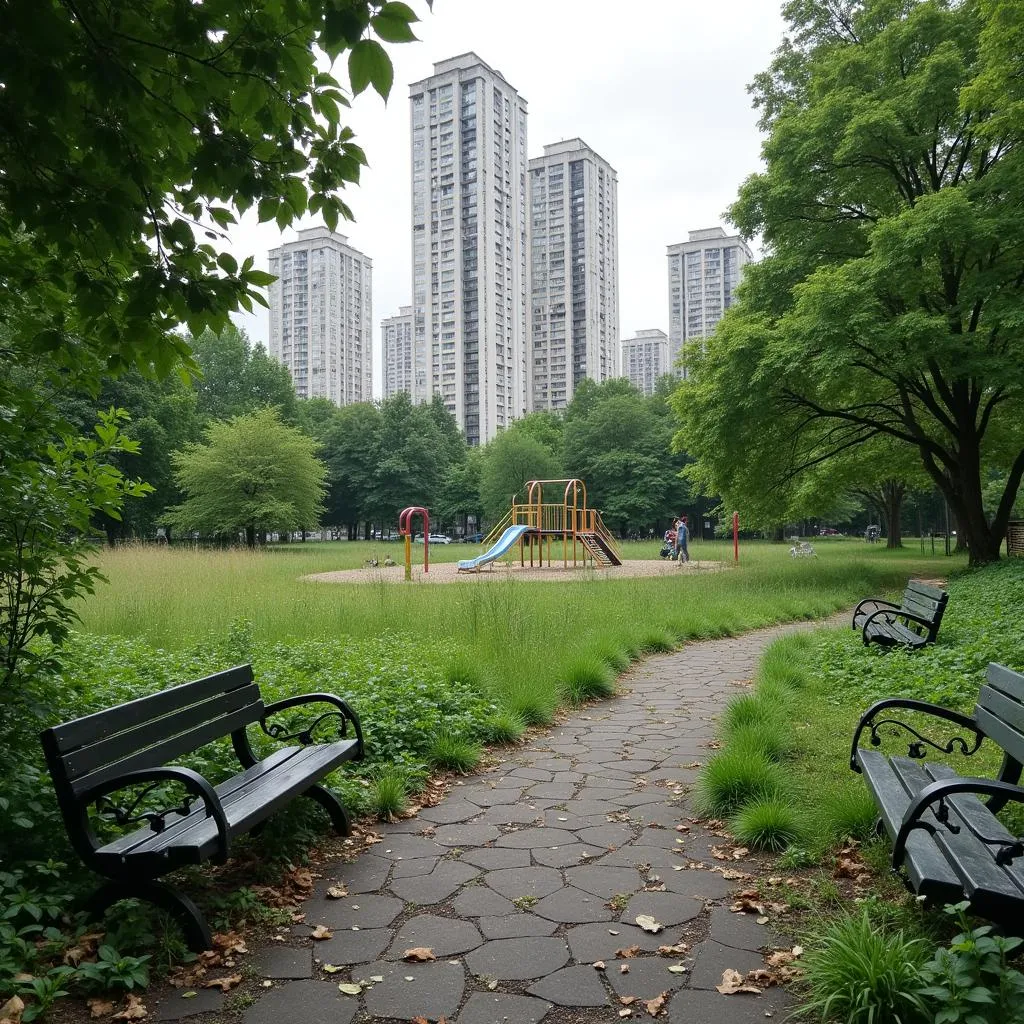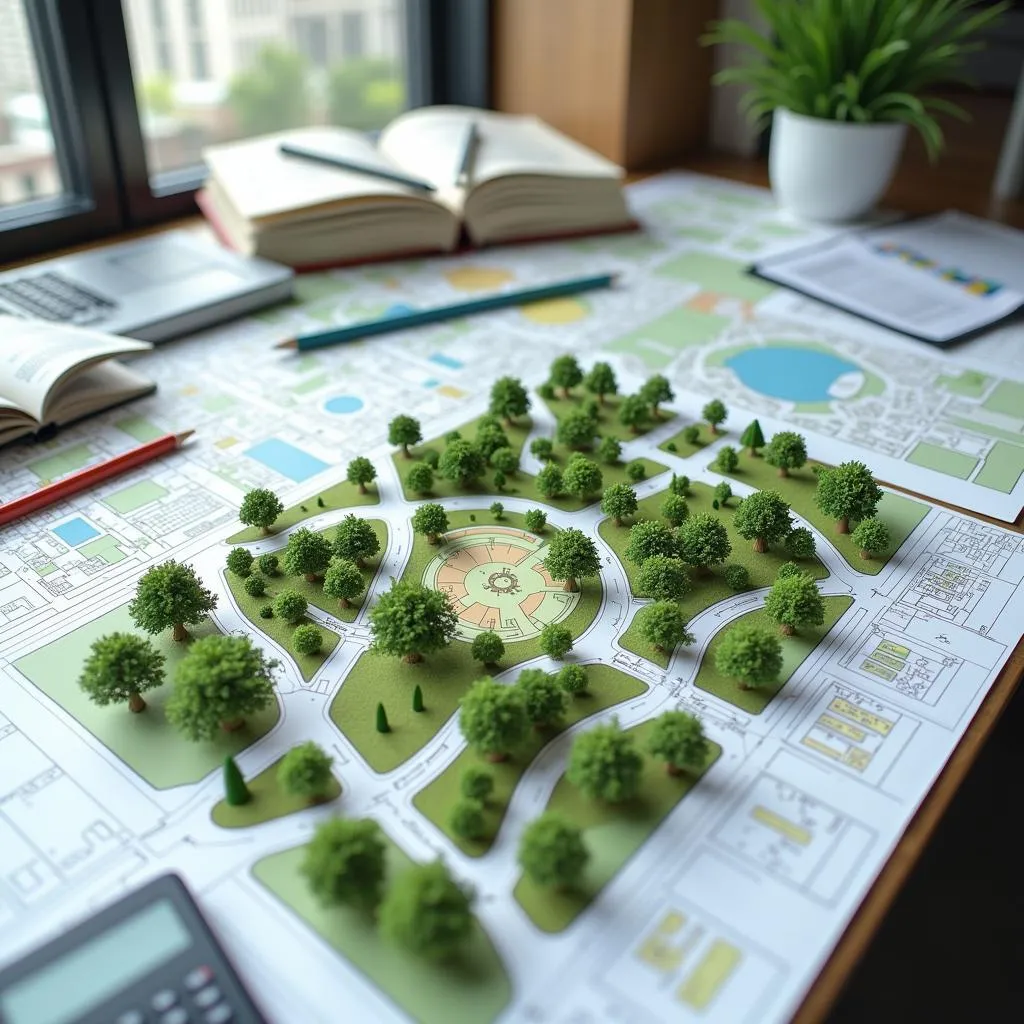The IELTS Speaking test often includes questions about local areas and potential improvements. One common topic is describing a place in your city that needs improvement. This subject allows examiners to assess your ability to discuss urban development, express opinions, and use descriptive language. Let’s explore how to approach this topic effectively to achieve a high score.
Describe a place where you go to escape from technology can be a related topic that may come up in your IELTS Speaking test. However, for now, let’s focus on discussing areas that need improvement in your city.
Part 1: Introduction and Interview
In Part 1, the examiner may ask general questions about your city and its development. Here are some possible questions:
- What do you like about living in your city?
- Are there any areas in your city that need improvement?
- How has your city changed in recent years?
Let’s look at a sample answer for question 2:
Examiner: Are there any areas in your city that need improvement?
Sample Answer (Band 7-8):
Yes, definitely. While my city has many wonderful aspects, I believe our public transportation system could use some significant upgrades. The buses are often overcrowded during peak hours, and the routes don’t adequately cover all areas of the city. Additionally, I think we need more green spaces in the downtown area to improve air quality and provide residents with places to relax and exercise.
Part 2: Long Turn
Now, let’s look at a potential cue card for this topic:
Describe a place in your city that you think needs improvement
You should say:
- Where this place is
- What it is like now
- What improvements it needs
- And explain why you think these improvements are necessarySample Answer (Band 6-7):
I’d like to talk about the central park in my city, which I believe needs significant improvement. The park is located in the heart of downtown, surrounded by office buildings and shopping centers.
Currently, the park is in a state of neglect. The grass is often overgrown, and there’s litter scattered around. The playground equipment is old and rusty, and there aren’t enough benches for people to sit on. The paths are cracked and uneven, making it difficult for elderly people or those with mobility issues to walk safely.
I think the park needs several improvements. Firstly, it needs regular maintenance to keep it clean and tidy. The playground should be renovated with new, safe equipment for children. More benches and picnic areas should be added to encourage people to spend time there. The paths need to be repaved to make them safer and more accessible. Finally, I believe adding some features like a small pond or flower gardens would make the park more attractive.
These improvements are necessary because a well-maintained central park can greatly enhance the quality of life in a city. It provides a place for people to relax, exercise, and connect with nature in the midst of urban life. A beautiful park can also attract tourists and improve the city’s image. Moreover, green spaces in cities are crucial for reducing air pollution and combating the urban heat island effect.
Sample Answer (Band 8-9):
I’d like to discuss the central park in my city, which I believe is in dire need of revitalization. This park is situated in the heart of our bustling downtown, surrounded by a myriad of office complexes and retail establishments.
In its current state, the park is woefully neglected. The once lush grass is now patchy and unkempt, while litter is strewn haphazardly across the grounds. The playground equipment is antiquated and corroded, posing potential safety hazards to children. There’s also a noticeable dearth of seating areas, discouraging visitors from lingering. Perhaps most concerning are the pathways, which have become treacherously uneven, making navigation challenging for the elderly and those with mobility impairments.
I believe a comprehensive overhaul is necessary to breathe new life into this space. Firstly, implementing a rigorous maintenance schedule would ensure the park remains clean and well-groomed. The playground should be completely reimagined with state-of-the-art, safe equipment that caters to children of all ages and abilities. Ample seating and picnic areas should be installed to create inviting spaces for relaxation and social interaction. The pathways need to be entirely reconstructed to ensure they’re smooth, level, and accessible to all. Lastly, I envision the addition of aesthetic elements such as a serene pond, vibrant flower gardens, or perhaps even a small amphitheater for community events.
These improvements are paramount for several reasons. A well-maintained central park serves as a vital green lung in the urban landscape, providing a much-needed respite from the concrete jungle. It offers a space for physical activity, social engagement, and connection with nature, all of which are crucial for the mental and physical well-being of city dwellers. Moreover, an attractive park can become a focal point for community life, hosting events and fostering a sense of local pride. From an environmental perspective, enhancing green spaces in cities is imperative for mitigating air pollution, reducing the urban heat island effect, and promoting biodiversity. Ultimately, investing in our central park is an investment in the livability and sustainability of our city as a whole.
 Central park in need of improvement
Central park in need of improvement
Follow-up Questions:
- How do you think the local government could fund these improvements?
- What impact would these changes have on the local community?
Sample Answers (Band 8-9):
-
The local government could explore a variety of funding avenues to finance these improvements. One approach might be to allocate a portion of the city’s budget specifically for park renovation. Additionally, they could seek grants from environmental organizations or partner with local businesses for corporate sponsorships. Another innovative method could be to implement a crowdfunding campaign, allowing citizens to directly contribute to the park’s improvement, fostering a sense of community ownership in the process.
-
These changes would likely have a profound and multifaceted impact on the local community. Firstly, a revitalized park would provide a safe and inviting space for families, encouraging outdoor activities and social interaction. This could lead to improved physical and mental health outcomes for residents. The enhanced aesthetics of the area might also boost property values in the surrounding neighborhoods. Furthermore, a well-designed park could become a hub for community events, fostering a stronger sense of local identity and social cohesion. From an environmental perspective, the improved green space would contribute to better air quality and increased biodiversity in the urban ecosystem.
Part 3: Two-way Discussion
In Part 3, the examiner will ask more abstract questions related to the topic. Here are some potential questions and sample answers:
Examiner: How important are public spaces in modern cities?
Sample Answer (Band 7-8):
Public spaces play a crucial role in modern cities. They serve as communal areas where people can gather, relax, and interact, which is especially important in today’s fast-paced urban environments. These spaces also contribute to the physical and mental well-being of residents by providing areas for exercise and connection with nature. Moreover, well-designed public spaces can enhance the aesthetic appeal of a city, potentially boosting tourism and local pride.
Sample Answer (Band 8-9):
Public spaces are absolutely indispensable in the fabric of modern urban life. They serve as the lifeblood of community interaction, providing crucial venues for social cohesion in our increasingly digitized world. These spaces act as democratic equalizers, where people from all walks of life can converge, fostering diversity and cultural exchange. From an urban planning perspective, they’re vital for sustainable development, offering green lungs that mitigate pollution and urban heat islands. Well-designed public spaces can also become catalysts for economic growth, attracting businesses and elevating property values in surrounding areas. Perhaps most importantly, they contribute significantly to the mental and physical well-being of city dwellers, offering respite from the often overwhelming pace of urban life and providing accessible areas for physical activity and recreation.
Examiner: What are some challenges cities face in maintaining and improving public spaces?
Sample Answer (Band 7-8):
Cities face several challenges in maintaining and improving public spaces. One major issue is funding, as many cities struggle with limited budgets and competing priorities. Vandalism and littering can also be persistent problems, requiring constant attention and resources. Another challenge is balancing different user needs – for example, creating spaces that are accessible to the elderly while also appealing to younger generations. Additionally, as cities grow and change, public spaces may need to be redesigned or repurposed to meet evolving community needs, which can be a complex and costly process.
Sample Answer (Band 8-9):
The maintenance and improvement of public spaces present multifaceted challenges for urban administrations. Fiscal constraints are often at the forefront, with cities grappling to allocate sufficient funds amidst competing demands for resources. This financial pressure is exacerbated by the continuous upkeep required to combat issues like vandalism and littering, which can quickly undermine the quality of these spaces.
Moreover, cities face the complex task of reconciling diverse and sometimes conflicting user needs. Creating spaces that are simultaneously accessible to the elderly, engaging for youth, and accommodating for families requires thoughtful, inclusive design – a balance that’s often difficult to strike. The challenge is further compounded by rapidly changing urban demographics and lifestyles, necessitating adaptive and flexible spaces that can evolve with the community.
Environmental concerns also pose significant challenges. As climate change intensifies, cities must design public spaces that are resilient to extreme weather events while also contributing to overall urban sustainability. This might involve implementing green infrastructure or using eco-friendly materials, which can be costly and technically complex.
Lastly, there’s the challenge of equitable distribution of quality public spaces across different neighborhoods. Ensuring that all areas of a city, regardless of socioeconomic status, have access to well-maintained public spaces is crucial for social equity but can be politically and logistically challenging to achieve.
 Urban planning challenges for public spaces
Urban planning challenges for public spaces
Key Vocabulary and Phrases for High Scores
To achieve a high score in your IELTS Speaking test, it’s crucial to use a range of advanced vocabulary and complex sentence structures. Here are some key terms and phrases that can help elevate your responses:
-
Revitalization /riːˌvaɪtəlaɪˈzeɪʃən/ (noun): The act of giving new life or vigor to something.
Example: “The park is in desperate need of revitalization to attract more visitors.” -
Infrastructure /ˈɪnfrəstrʌktʃə(r)/ (noun): The basic physical and organizational structures and facilities needed for the operation of a society or enterprise.
Example: “Improving the city’s infrastructure is crucial for sustainable urban development.” -
Sustainable /səˈsteɪnəbl/ (adjective): Able to be maintained at a certain rate or level.
Example: “We need to focus on sustainable urban planning to ensure our city’s long-term health.” -
Amenities /əˈmiːnətiz/ (noun): A desirable or useful feature or facility of a building or place.
Example: “The park lacks basic amenities such as clean restrooms and drinking fountains.” -
Urban sprawl /ˈɜːbən sprɔːl/ (noun): The uncontrolled expansion of urban areas.
Example: “Effective city planning can help prevent urban sprawl and preserve green spaces.” -
Gentrification /ˌdʒentrɪfɪˈkeɪʃn/ (noun): The process of renovating and improving a house or district so that it conforms to middle-class taste.
Example: “While improvements are necessary, we must be cautious of gentrification displacing long-time residents.”
Using these terms appropriately in your responses can demonstrate a sophisticated vocabulary and a deep understanding of urban development issues.
Examiner’s Advice
To excel in the IELTS Speaking test, particularly when discussing urban improvements:
- Practice describing places in detail, focusing on both positive and negative aspects.
- Develop your opinion on urban issues and be prepared to explain your views.
- Use a range of tenses when discussing past conditions, current situations, and future improvements.
- Incorporate advanced vocabulary related to urban planning and development.
- Use specific examples from your own city to illustrate your points.
- Practice speaking for 2 minutes on similar topics to prepare for Part 2.
- Listen carefully to the examiner’s questions in Part 3 and address all aspects in your responses.
Remember, the key to a high score is not just about using advanced vocabulary, but also about expressing your ideas clearly and coherently while directly addressing the question at hand.
Describe a place in your country that you think is underrated could be another interesting topic to practice with, as it allows you to showcase your descriptive skills and knowledge about your country’s lesser-known attractions.
By following these guidelines and practicing regularly, you’ll be well-prepared to discuss urban improvements and other related topics in your IELTS Speaking test.


